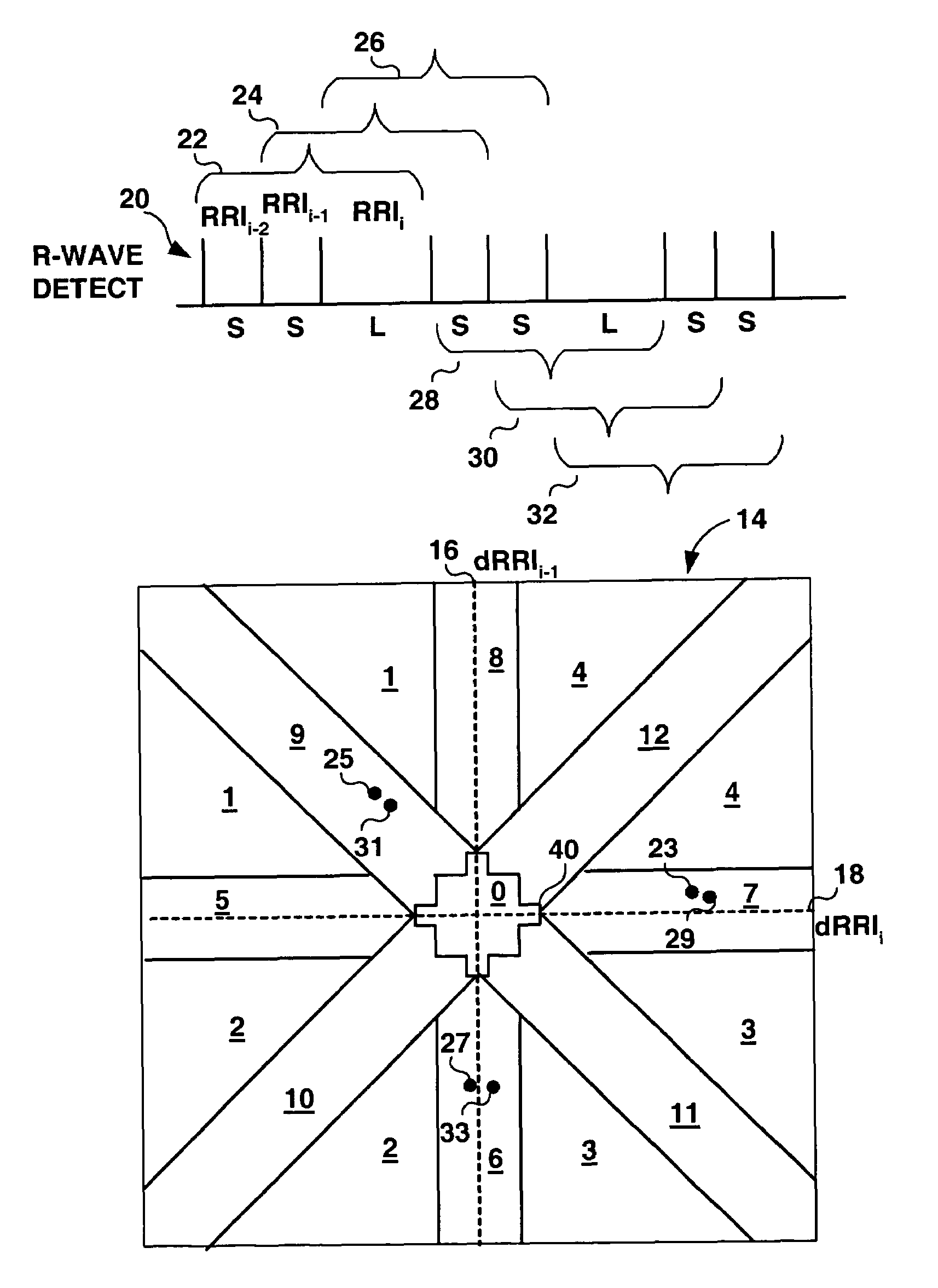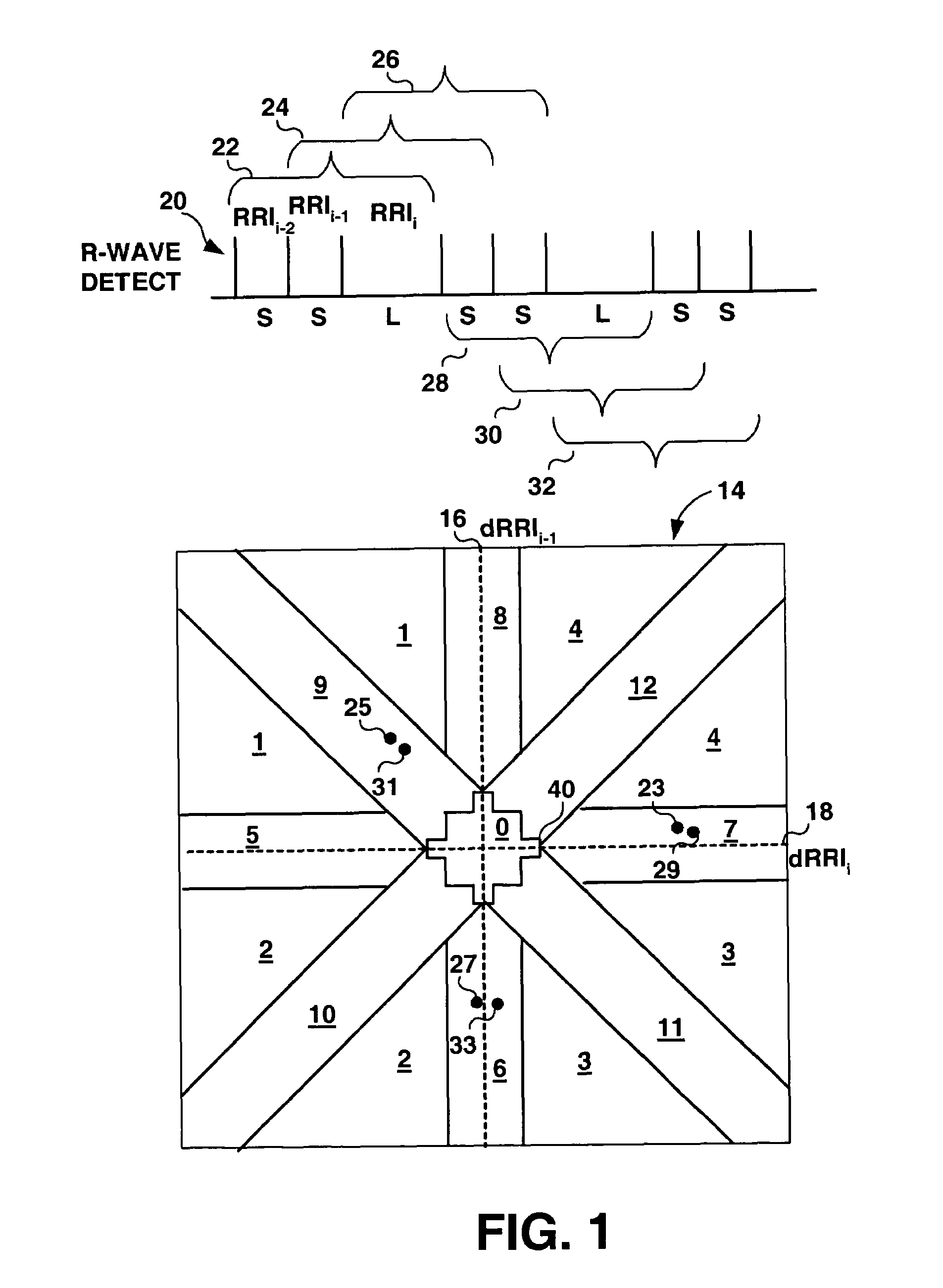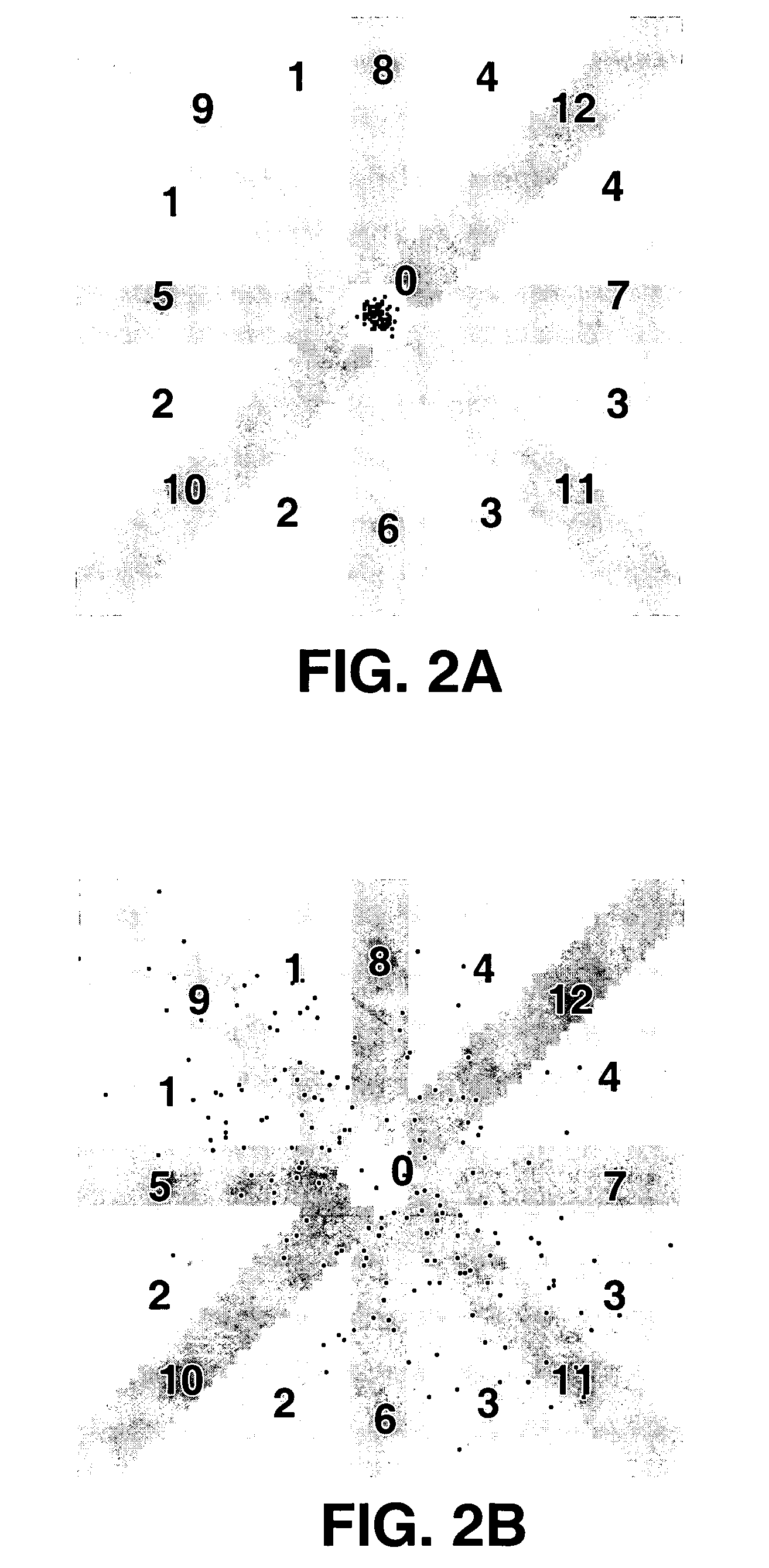Method and apparatus for detection of tachyarrhythmia using cycle lengths
a technology of cycle length and detection method, applied in the field of medical devices, can solve the problem that the atrial egm signal is not always available for use in detecting and discriminating atrial arrhythmias
- Summary
- Abstract
- Description
- Claims
- Application Information
AI Technical Summary
Benefits of technology
Problems solved by technology
Method used
Image
Examples
Embodiment Construction
[0025]The present invention provides a method for detecting and discriminating between AF and OAT using discriminatory cluster signatures of ventricular cycle lengths. The underlying conduction mechanism in the heart during AF and organized AT, as well as PACs or other causes of ventricular cycle length (VCL) irregularity, produces different patterns of irregularity in VCL. Detection and discrimination of AF and OAT, including AFL, is based on discrimination of the different patterns of VCL unique to the conduction pattern of the underlying rhythm.
[0026]The method includes acquiring ventricular cardiac signals, which could be electrical signals, pressure signals, oximetry signals, or any other physiological signal that enables a determination of ventricular cycle lengths, and measuring beat-to-beat differences in VCL. In one embodiment, electrical cardiac signals, which may be surface ECG or intracardiac EGM signals, are used to measure R-R intervals (RRIs). The difference between c...
PUM
 Login to View More
Login to View More Abstract
Description
Claims
Application Information
 Login to View More
Login to View More - R&D
- Intellectual Property
- Life Sciences
- Materials
- Tech Scout
- Unparalleled Data Quality
- Higher Quality Content
- 60% Fewer Hallucinations
Browse by: Latest US Patents, China's latest patents, Technical Efficacy Thesaurus, Application Domain, Technology Topic, Popular Technical Reports.
© 2025 PatSnap. All rights reserved.Legal|Privacy policy|Modern Slavery Act Transparency Statement|Sitemap|About US| Contact US: help@patsnap.com



